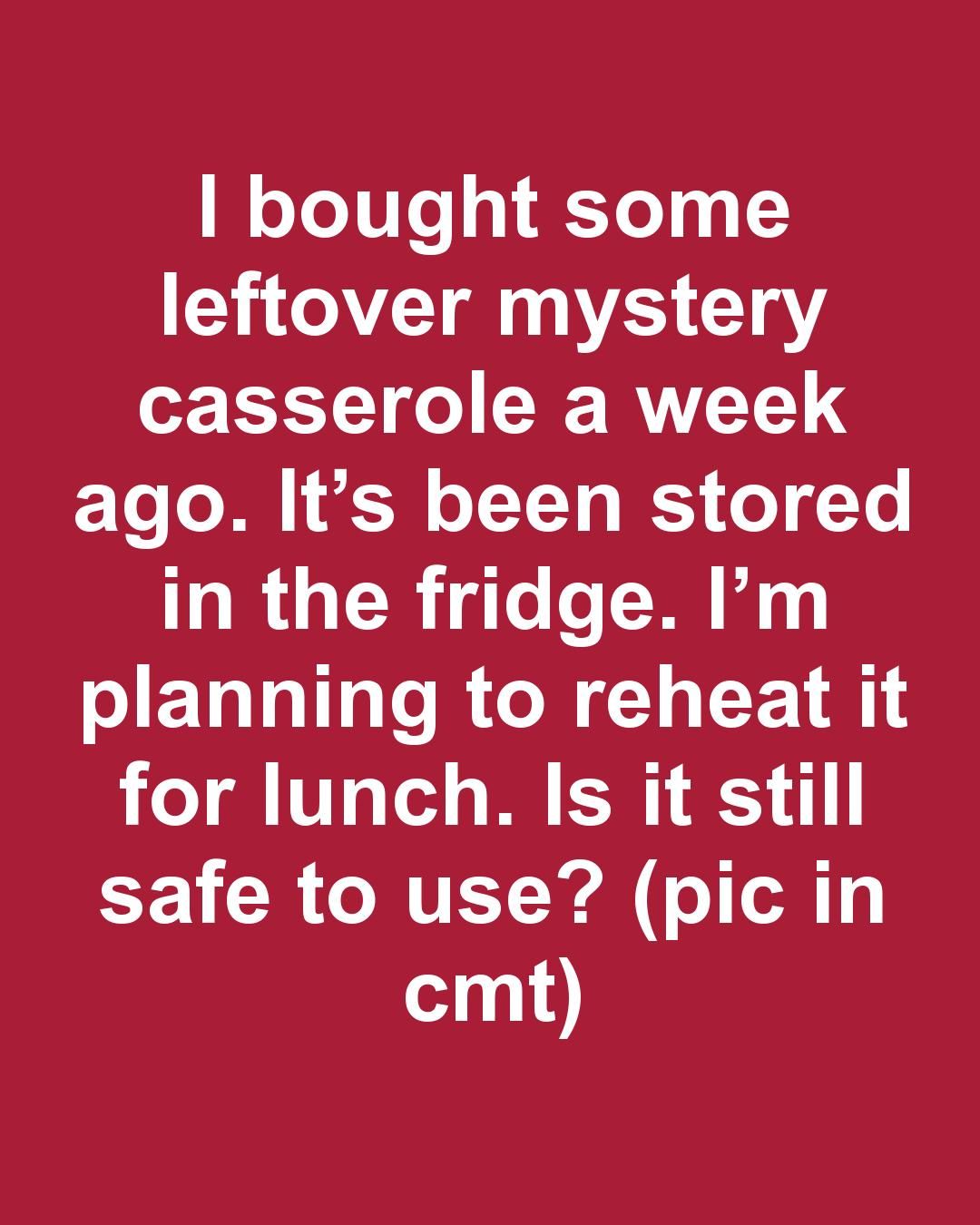Leftovers can be a convenient and economical way to enjoy meals without the hassle of cooking from scratch every day. However, when it comes to consuming food that has been stored for a while, it's crucial to ensure that it is still safe to eat. This is especially true for dishes like casseroles, which often contain a variety of ingredients that can spoil at different rates.
In this article, we will explore the safety of consuming leftovers, particularly a mystery casserole that has been sitting in your fridge for a week. We'll delve into food safety basics, proper storage techniques, and how to identify signs of spoilage. By the end, you'll have a clearer understanding of whether your casserole is safe to reheat and enjoy for lunch.
Advertisement
1. Understanding Food Safety Basics
Food safety is a critical aspect of preventing foodborne illnesses, which can occur when consuming contaminated foods. The basic principles of food safety involve proper handling, cooking, and storage of food to prevent the growth of harmful bacteria. Bacteria such as Salmonella, E. coli, and Listeria can thrive in improperly stored food, leading to severe health issues. Understanding these fundamentals helps in making informed decisions about consuming leftovers.
2. The Importance of Proper Storage
Proper storage is essential to maintain the quality and safety of leftovers. Refrigeration slows down bacterial growth, but it doesn't stop it completely. It's important to store leftovers in airtight containers to prevent contamination and to keep them at a consistent temperature. The fridge should be set to 40°F (4°C) or below to ensure that food remains safe for consumption. Additionally, labeling containers with the date of storage can help track how long the food has been kept.
3. How Long Can Leftovers Be Safely Stored?
According to the USDA, leftovers can generally be safely stored in the refrigerator for 3 to 4 days. Beyond this period, the risk of bacterial growth increases significantly, even if the food looks and smells fine. For casseroles, which often contain perishable ingredients like meat, dairy, and vegetables, it's crucial to adhere to these guidelines to avoid potential foodborne illnesses.
4. Identifying Signs of Spoilage
Identifying spoilage is key to determining whether leftovers are safe to eat. Common signs include an off smell, discoloration, or a slimy texture. Mold growth is an obvious indicator that the food should be discarded. However, some bacteria that cause foodborne illness do not alter the taste, smell, or appearance of food, making it important to rely on storage time and conditions as primary indicators of safety.
5. The Role of Temperature in Food Safety
Temperature plays a pivotal role in food safety. The 'danger zone' for bacterial growth is between 40°F (4°C) and 140°F (60°C). Keeping food out of this temperature range is essential to prevent bacterial proliferation. When storing leftovers, ensure they are cooled quickly and kept at a safe temperature. Similarly, when reheating, food should reach an internal temperature of 165°F (74°C) to ensure any potential bacteria are killed.
6. Best Practices for Reheating Leftovers
Reheating leftovers properly is crucial for food safety. Use a food thermometer to ensure that the internal temperature reaches at least 165°F (74°C). Stirring food during reheating can help distribute heat evenly. If using a microwave, cover the food to retain moisture and promote even heating. Avoid reheating leftovers more than once, as repeated cooling and reheating can increase the risk of bacterial growth.
7. The Risks of Consuming Spoiled Food
Consuming spoiled food can lead to foodborne illnesses, which may cause symptoms like nausea, vomiting, diarrhea, and abdominal pain. In severe cases, it can lead to hospitalization or even be life-threatening, especially for vulnerable populations such as young children, the elderly, and those with weakened immune systems. Understanding these risks underscores the importance of proper food safety practices.
8. When in Doubt, Throw It Out
The adage 'when in doubt, throw it out' is a valuable guideline when it comes to food safety. If you're unsure about the safety of your leftovers, it's better to err on the side of caution and discard them. The potential health risks of consuming spoiled food far outweigh the cost of wasting a meal. Trust your instincts and prioritize your health and safety.
9. Tips for Preventing Food Waste
Preventing food waste starts with mindful meal planning and storage. Only cook what you can consume within a few days, and freeze portions that you can't eat immediately. Use clear containers to easily identify leftovers and incorporate them into new meals to keep them interesting. Regularly check your fridge and pantry to use up items before they spoil.
10. Expert Opinions on Leftover Safety
Food safety experts emphasize the importance of adhering to recommended storage times and temperatures. They advise against relying solely on sensory cues like smell and appearance, as some harmful bacteria do not produce noticeable changes. Experts also recommend using technology, such as food thermometers, to ensure food is reheated to safe temperatures.
Advertisement
11. Personal Experiences and Anecdotes
Many people have stories of consuming questionable leftovers and facing the consequences. For instance, a friend once ate a week-old casserole that seemed fine but ended up with a mild case of food poisoning. These experiences highlight the importance of following food safety guidelines and not taking chances with your health. Learning from these anecdotes can help others make safer choices.

